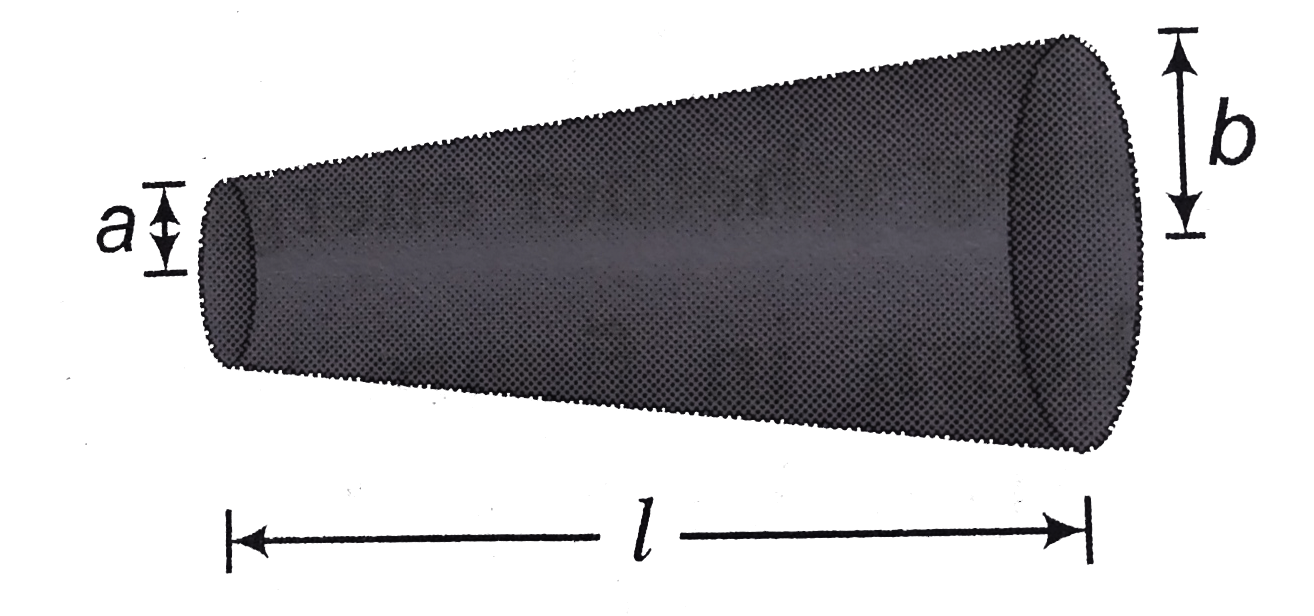A potential difference of 30V is applied between the ends of a conductor of length 100 m and resistance 0.5Ω . The conductor has a uniform cross-section. Find the total linear momentum of free electrons. Solution in Telugu
10−9kg.m/s
6.8×10−8kg.m/s
3.4×10−9kg.m/s
3.4×10−8kg.m/s
The correct Answer is:D
Step by step video, text & image solution for A potential difference of 30V is applied between the ends of a conductor of length 100 m and resistance 0.5Omega . The conductor has a uniform cross-section. Find the total linear momentum of free electrons. by Physics experts to help you in doubts & scoring excellent marks in Class 12 exams.
Updated on:21/07/2023Topper's Solved these Questions
- CURRENT ELECTRICITYBook:AAKASH SERIESChapter:CURRENT ELECTRICITYExercise:ADDITIONAL PRACTICE EXERCISE (LEVEL -II LECTURE SHEET (ADVANCED) (Integer Type Questions))
Explore 5 Videos
- CURRENT ELECTRICITYBook:AAKASH SERIESChapter:CURRENT ELECTRICITYExercise:ADDITIONAL PRACTICE EXERCISE (LEVEL -II PRACTICE SHEET (ADVANCED) (Straight Objective Type Questions))
Explore 2 Videos
- CURRENT ELECTRICITYBook:AAKASH SERIESChapter:CURRENT ELECTRICITYExercise:ADDITIONAL PRACTICE EXERCISE (LEVEL -I(MAIN) (Straight Objective Type Questions))
Explore 6 Videos
- CURRENT ELECTRICITYBook:AAKASH SERIESChapter:CURRENT ELECTRICITYExercise:PROBLEMS (LEVEL-II)
Explore 26 Videos
- DUAL NATURE OF RADIATION AND MATTERBook:AAKASH SERIESChapter:DUAL NATURE OF RADIATION AND MATTERExercise:PRACTICE EXERCISEX
Explore 44 Videos
Similar Questions
Current density in a cylindrical wire of radius R is given as J=⎧⎪⎨⎪⎩J0(xR−1) for 0≤x<R2J0xR for R2≤x≤R.
If the current flowing in the wire is k12πJ0R2, find the value of k.
View SolutionA block of metal is heated directly by dissipating power in the internal resistance of block. Because of temperature rise, the resistance increases exponentially with time and is given by R(t)=0.5e2t, where t is in seconds. The block is connected across a 110 V source and dissipates 7644 J heat over a certain period of time. Calculate this period of time.
View SolutionThe current through a wire depends on time as i=i0+αt, where i0=10A and α=4A/s. Find the charge crossed through a section of the wire in 10 seconds.
View SolutionA battery of emf 10 V and internal resistance 3Ω is connected to a resistor. If the current in the circuit is 0.5 A, what is the resistance of the resistor? What is the terminal voltage of the battery when the circuit is closed?
View SolutionTwo separate monochromatic light beams A and B of the same intensity are falling normally on a unit area of a metallic surface. Their wave lengths are λA and λB, respectively. Assuming that all the incident light is used in ejecting the photoelectrons the ratio of the photoelectrons from the beam A to that from B is :
View SolutionA conductor of length l has a non-uniform cross-section. The radius of cross-section varies linearly from a to b. The resistivity of the material is ρ. Find the resistance of the conductc across its ends.

View SolutionA cylindrical conductor of length l and uniform area of cross-section A has resistance R. Another conductor of length 2l and resistance R of the same material has area of cross-section :
View SolutionA potential difference is applied between the ends of a conductor of uniform radius 2mm. It results in an electric field of strength 250V/m along the length of conductor. Find the resistivity of the material if current in the conductor is 2πA.
View SolutionWhen a potential difference is applied across the ends of a linear metallic conductor
View SolutionA cross a metallic conductor of non-uniform cross-section, a constant potential difference is applied. The quantity which remain (s) constant along the conductor is
View SolutionCalculate the resistance of a conductor through which a current of 2A passes, when the potential difference between its ends is 30V.
View SolutionCalculate the resistance of a conductor through which a current of 2A passes, when the potential difference between its ends is 30V.
View SolutionA cylindrical conductor of length l and uniform area of cross section A has resistance R. Another conductor of length 2l and resistance R of the same material has an area of cross section
View SolutionA cylindrical conductor of length l and uniform area of cross section A has resistance R. Another conductor of length 2.5l and resistance 0.5R of the same material has an area of cross section
View SolutionA cylindrical conductor of length l and uniform area of cross-section A has resistance R. Another conductor of length 2l and resistance R of the same material has area of cross-section :
View SolutionA potential difference is applied between the ends of a conductor of uniform radius 1.5 mm. It results in an electric field of strength 250 V/m along the length of conductor. Find the resistivity of the material if current in the conductor is 2A.
View Solution

